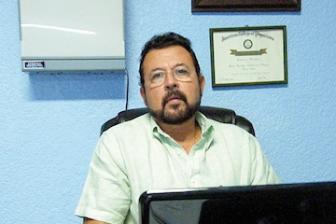Experts say, “Don’t Drink CAPAMA’s Water”

(Acapulco, NA 12 August) The water distributed by CAPAMA in Acapulco and surrounding suburbs is unfit to drink, according to a biochemist and a physician who were consulted by Novedades Acapulco, a local newspaper. “The level of chlorine in the water is the minimum permitted by law, and it is not enough for us to recommend the water for drinking,” they concluded.
Tourists typically drink only bottled water; restaurants and hotels avoid the use of tap water for everything except bathroom use. The low quality of the water most affects those who live in the poorest areas of town.
The experts took samples of tap water from the downtown area and nearby Progreso, as well as from Renacimiento, El Coloso and Colosio. The samples were then analyzed at a private lab. All were found to be within the limits specified for potable water; however, biochemist Juanita Fontova Román recommended not drinking the water for fear of possible damage to the body. In her opinion, it could be used for bathing and brushing teeth, but its internal consumption should be avoided whenever possible.
The problem, according to specialists, is that many gastrointestinal diseases are common in Acapulco, caused in part by ingesting food or drink that has been contaminated or spoiled; however, the main cause of these maladies is drinking tap water without chlorinating it or boiling it first.
Dr. Roberto Martínez de Pinillos, president of the Guerrero Medical Federation, said that the water “could be coming out of the El Cayaco water treatment plant in a potable condition, though that is certainly not guaranteed; however, because of the poor condition of the distribution network, the water that arrives at the majority of residences and businesses is a chocolate brown color, which, of course, is contaminated.”
According to Dr. Martínez, the diarrhea and other gastrointestinal maladies seen so frequently in the local population are from this cause, and children and older people are the portions of the population most heavily affected because of deficiencies in their immune system. Health statistics are deficient on this subject, but the number of cases presented is “considerable,” especially in the surrounding communities. Dr. Martínez said that these gastrointestinal diseases are one of the principal causes of death in Acapulco’s rural zone. Illnesses include bacterial and viral diseases like salmonella, giardia, and e-coli.
Doctor Javit Kuri Guinto, a nationally-prominent gastroenterologist and surgeon, added his comments to those of his colleague. He said that the most recommendable measure would be for CAPAMA itself to inform the population that the water it distributes is really not 100% potable. This would avoid a huge number of avoidable gastrointestinal infections and deaths.
In a related story, more residents of outlying districts demonstrated at CAPAMA yesterday to protest the lack of water in their neighborhoods and a collapsed drain that his causing sewage to back up.

